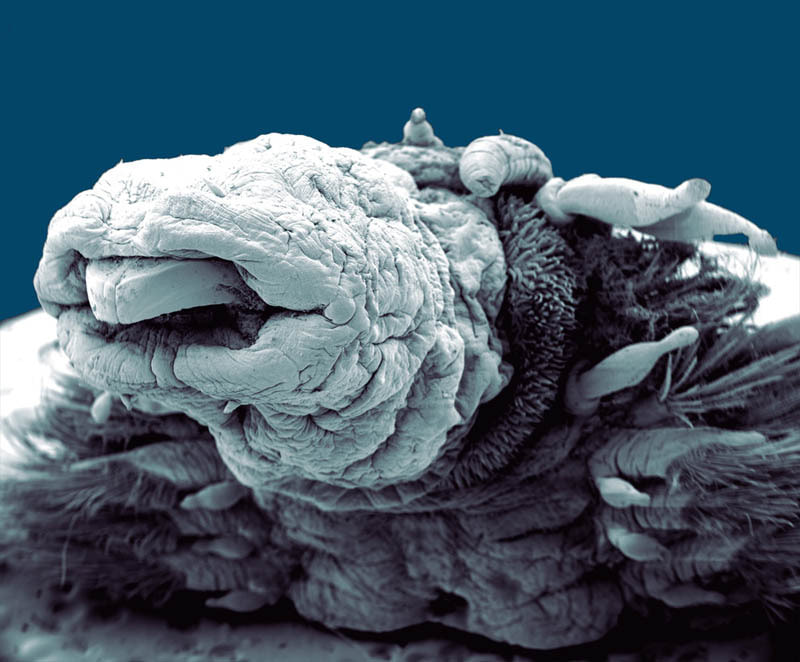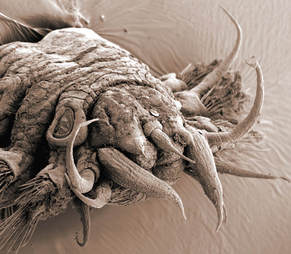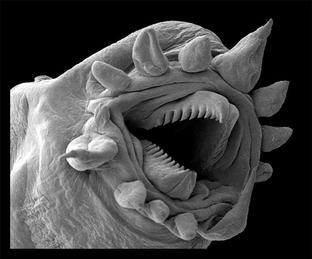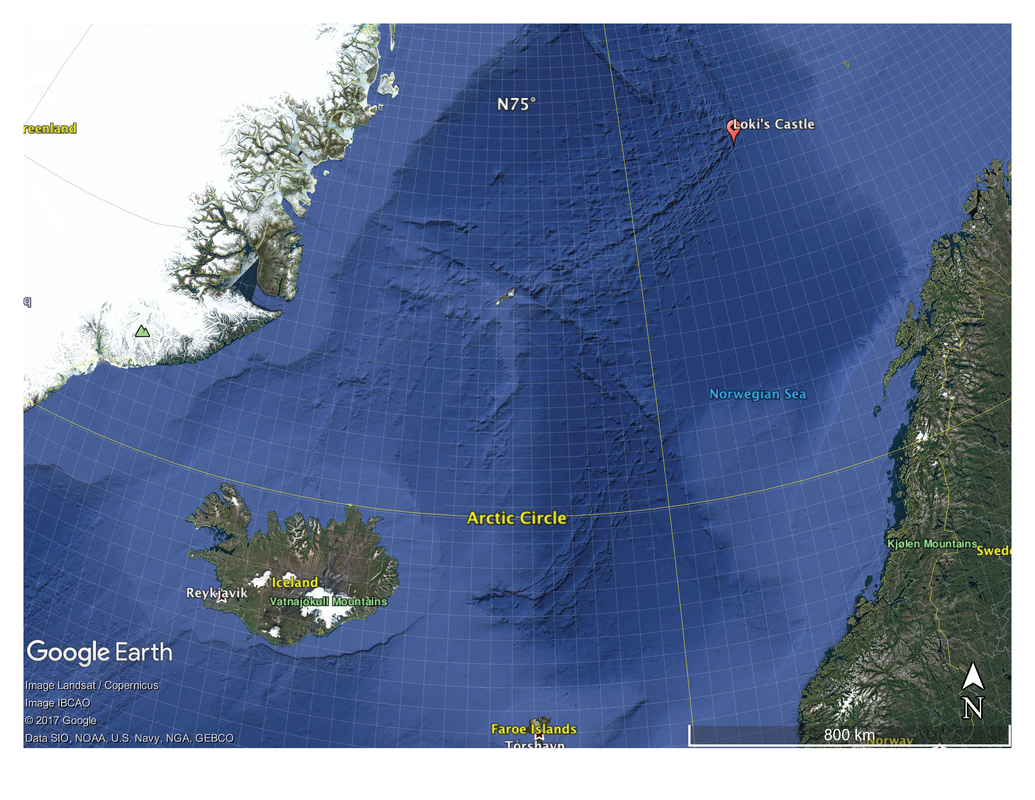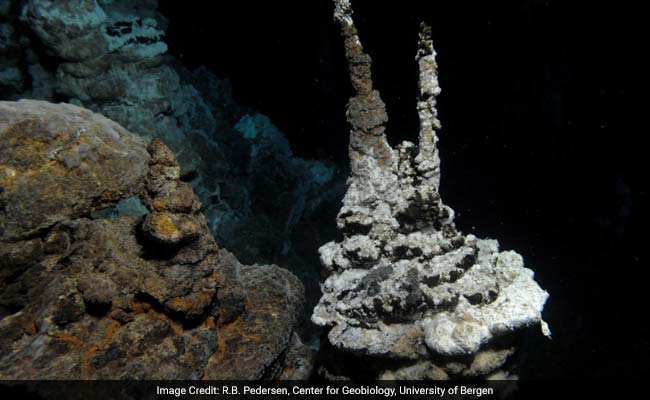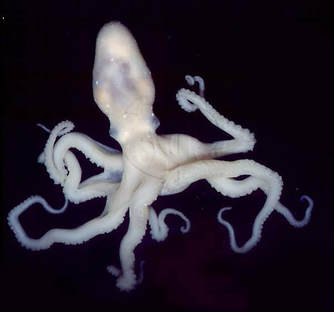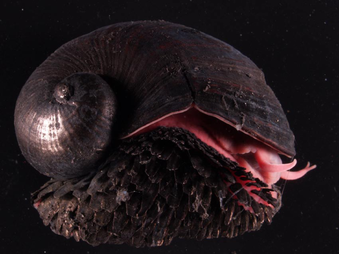|
Rosemary
Hydrothermal vent life up close To complement Jill’s research into exciting locations for hydrothermal vents and some of the inhabitants that reside there, I have been looking into the strange and wonderful visual inspiration that can be gathered from electron microscope photography. Below are some images of hydrothermal worms in all their disturbing detail.
These images will provide material for creating more extreme adaptations in the creature designs for our world. Bringing these microscopic visual details into the macro could help to create more unusual, alien-like creatures.
Closing thoughts These past two weeks have been a good chance to fuel up on some more inspiration. From looking at the speculative evolution of Wayne Douglas Barlowe last week and the hydrothermal worms of Philippe Crassous this week, I feel ready to return to the drawing board and create some more imaginative creatures inspired by science and adapted to volcanic environments. Another challenge will be to synthesize the patterns, textures and fractals that appear in nature, specifically inspired by satellite imagery of volcanoes, into the creature designs. Will the formations become osteoderms, markings or influence the overall body shape of the creatures? 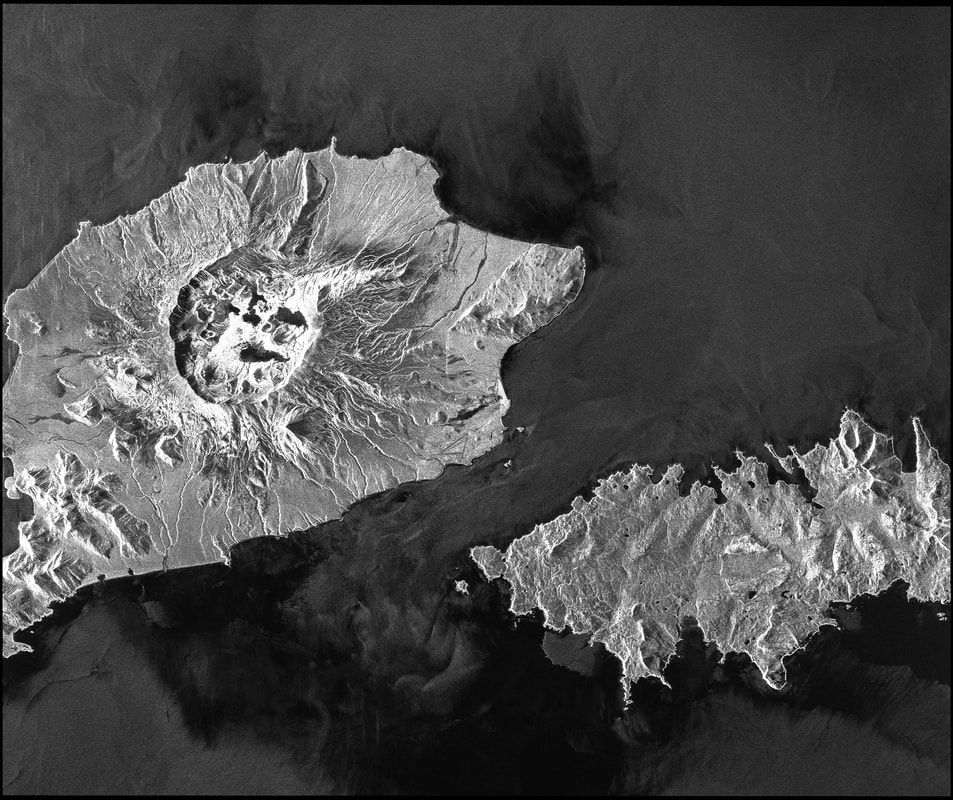
This ALOS-Phased Array L-band SAR (PALSAR) image of Okmok volcano in the Aleutian Islands was collected on 13 October 2010. The image provides data on the structure of the crater and drainage patterns on the volcano. Wind patterns related to the volcano can be seen in the differing backscatter values of the water. © JAXA/METI 2010
Jill
Hello All, We have been looking at geothermal hot springs and finding inspiration from Yellowstone and its inhabitants for the previous creature designs. This week I’ve been focusing on finding some exciting locations for hydrothermal vents and for some unique and curious life that inhabits them. I combed through information on different hydrothermal vent fields and was particularly engrossed in discoveries in the polar regions. I was inspired by Loki’s Castle (73°32'60.00"N, 8° 9'0.00"E) for its far north location, fantastical name sake, and the “Dumbo Octopus” that has been found there.
Some great video of Loki’s Castle and the curious creature called the “Dumbo Octopus” can be seen in the following links from the University of Bergen expedition dive.
Here is a remarkable video of the Vulcanoctopus in action from GEOMAR
I’m looking forward to next week where we will be discussing these locations and creature adaptations. Until next week! -Jill References: 1. González, Á.F.; Guerra, Á.; Pascual, S.; Briand, P. (1998). Vulcanoctopus hydrothermalis gen. et sp. nov. (Mollusca, Cephalopoda): an octopod from a deep-sea hydrothermal vent site. Cah. Biol. Mar. 39(2): 169-184.: http://www.vliz.be/en/imis?refid=66485/ 2. Rocha Francisco, Gonzalez Angel, Segonzac Michel, Guerra Angel (2002). Behavioural observations of the cephalopod Vulcanoctopus hydrothermalis. CBM - Cahiers de Biologie Marine, 43(3-4), 299-302. Open Access version : http://archimer.ifremer.fr/doc/00000/897/ 3. Nakamura K, Watanabe H, Miyazaki J, Takai K, Kawagucci S, et al. (2012) Discovery of New Hydrothermal Activity and Chemosynthetic Fauna on the Central Indian Ridge at 18u–20uS. PLoS ONE 7(3): e32965.doi:10.1371/journal.pone.0032965.: http://journals.plos.org/plosone/article?id=10.1371/journal.pone.0032965/
0 Comments
Leave a Reply. |

